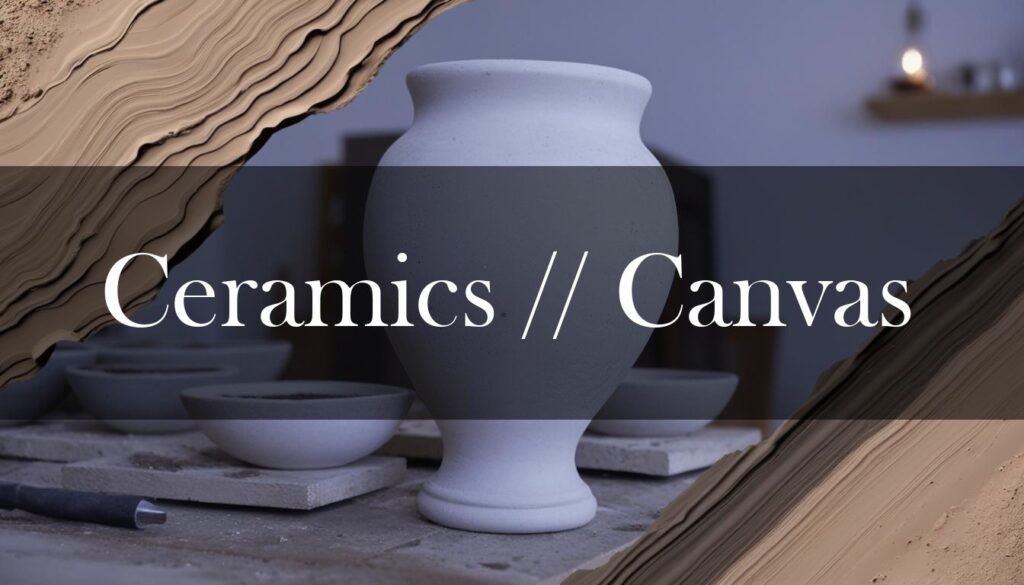Painting ceramics opens up a world of creative possibilities, allowing you to personalize everything from functional tableware to decorative art pieces. The journey, however, begins long before the first brushstroke. Understanding the nuances of ceramic bisque, paint types, preparation methods, painting techniques, and sealing processes is key to achieving lasting, vibrant results. Let’s dive into how to transform your ceramic pieces into stunning works of art.
First, selecting the right ceramic bisque is paramount. Earthenware, with its porous nature, is a fantastic choice for beginners as it readily absorbs paint. Stoneware, denser and more durable, presents a slight challenge but is still quite paintable with the right techniques. Porcelain, known for its smoothness, requires a bit more prep work, such as sanding or priming, to ensure good paint adhesion. The surface texture also plays a role; smooth surfaces are great for detailed work, while textured surfaces can add depth to your designs. For beginners, earthenware bisque with a slightly textured surface is often recommended. Seasoned artists might lean towards stoneware or porcelain, embracing the challenge of proper surface preparation. Remember, lightly sanding any bisque surface can create a better grip for the paint.
Next, choosing the right paint is vital for adhesion, durability, and vibrancy. Acrylic paints are versatile and water-based, making them ideal for unglazed surfaces and easy to clean. For a glossy and durable finish, enamel paints are a great option, often requiring a curing process. Underglazes, applied before the final glazing and firing, become one with the ceramic, offering a long-lasting finish. Paint markers provide precision for intricate designs, and spray paints allow for quick, even coverage. When choosing acrylics, the Arteza Acrylic Paint Set is a great option. For enamels, consider FolkArt Enamel Glass & Ceramic Paint Set. And for durable pieces, the Pebeo Porcelaine 150 Paint Set is heat-resistant and dishwasher-safe once baked.
“Choosing the right paint and bisque is important, but properly preparing your ceramics is key.”
Properly preparing your ceramic surface is just as crucial as selecting the right paint. Start by cleaning the surface to remove any dirt or grease. For stubborn stains, a baking soda paste can work wonders. Sanding the surface with fine-grit sandpaper creates a texture that enhances paint adhesion. Applying a high-quality, oil-based primer is essential, especially for preventing moisture from seeping into the ceramic. Remember to work in a well-ventilated area and wear protective gear during these steps.
With your ceramic prepped and your paints chosen, it’s time to explore different painting techniques. Brushwork offers endless possibilities, with different brushes creating various effects. Sponging is great for adding texture and depth, while stenciling allows for consistent patterns. Sgraffito, the art of scratching through a surface layer to reveal a contrasting color, can create intricate designs. Underglaze painting, applying color before glazing, allows for detailed and precise designs.
Consider using stencils to easily create repeatable patterns, shapes, and borders.
Stenciling is great for more than just creating perfect shapes; it can also be used to make letters!
Finally, sealing your painted ceramics is essential for protecting your artwork. Clear acrylic sealers enhance color vibrancy and provide moisture resistance. Polyurethane varnishes offer a durable, water-resistant finish. Epoxy resin coatings create a thick, glossy layer. Specialized ceramic sealants make unglazed areas waterproof, and Mod Podge is a versatile option for sealing, gluing, and finishing. Clear acrylic sealers like Mayco AC-501 and AC-502 are great options, as well as FolkArt Waterbase Varnish. Krylon Triple Thick Clear Glaze Aerosol Spray works great for spray sealing.
- Always ensure the surface is clean and dry before sealing.
- Work in a well-ventilated area.
- Allow the sealant to cure fully.
- If your piece will be used for food, make sure your sealant is food-safe.
Painting ceramics is a rewarding and expressive art form. By understanding the materials, techniques, and processes involved, you can transform ordinary ceramic pieces into personalized masterpieces that will last for years to come.





